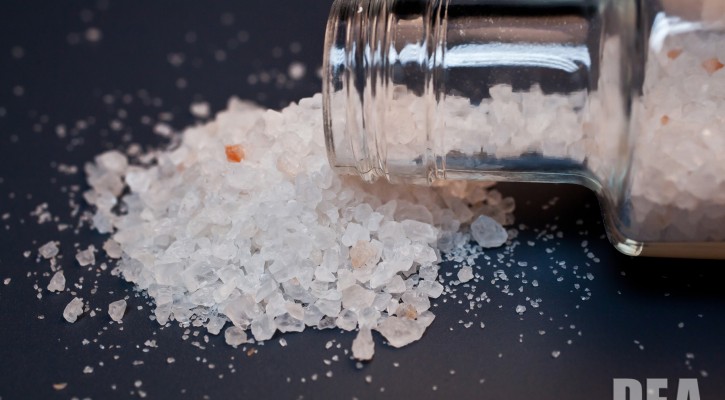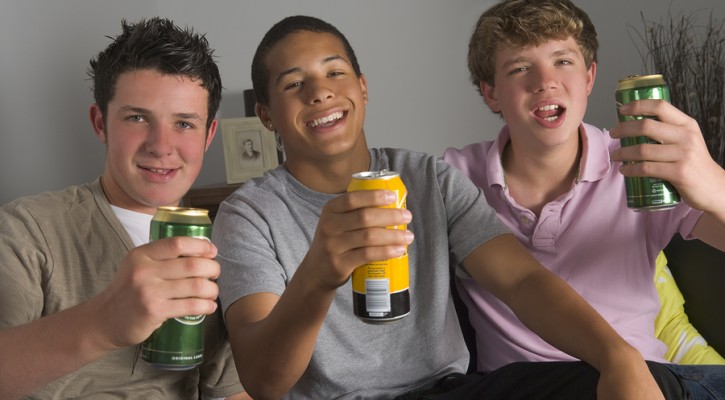Monthly Archives: April 2015

Two Dangerous Drugs Hit Florida’s Streets
April 14, 2015
Two dangerous drugs are gaining in popularity according to health and law enforcement officials in Florida. Users of the drugs, known commonly as “Flakka” and “N-bomb” are showing up more and more in emergency rooms in critical condition.
The problem for law enforcement is that both of these dangerous drugs fall into a class of drugs known as synthetic or designer drugs in which a controlled substance or illegal drug is chemically changed. Altering these drugs is relatively easy and cheap and the result is that they retain most, if not more, of their psychoactive power but, because of their changed chemical structure, they’re no longer classified as illegal drugs. Law enforcement officials are powerless to do anything until state legislatures or the federal government can act to add the drugs to the list of illegal substances. Once they’re added to the list, drug dealers can simply perform another chemical modification and they’re back in business.
Flakka
Flakka belongs to the same class of chemicals known as cathinones used in bath salts. According to health experts, there were a total of 126 reported deaths tied to synthetic cathinone in Florida in 2013.
Flakka creates a hallucinogenic effect described by health experts as “excited delirium.” It produces a psychotic effect and leads to paranoia in which the user feels he or she is being chased and they’ll do anything to escape their pursuers.
Users can suffer from hypothermia causing their body temperatures to rise to as much as 105 degrees. Due to the high body temperatures, users are often found stripped down or even naked in the street.
The drug also gives the user an almost superhuman strength requiring as many as five police officers to restrain them. In severe cases, the drug can also cause muscle tissues to decompose and flow into the bloodstream. If that happens, it can lead to kidney and heart failure.
Flakka looks like its cousin bath salts; basically similar in appearance to epsom salts or rock salt. The drug can be swallowed, inhaled or injected.
As the drug wears off, it creates a severe depression effect causing users to take more of the drug to put them back in their former euphoric state of mind.
N-bomb
N-bomb is referred to as a legal or “natural” LSD and is responsible for at least 17 deaths since 2010.
This drug has many of the same effects on its users as Flakka including; hallucinations, psychosis, paranoia, and hypothermia.
The only way for emergency rooms to treat for the drug is to manage agitation and treat the various symptoms to prevent organ failure. External cooling of the body is also necessary.
N-bomb can come in liquid form or sold on blotter paper. In its powder form, it can be sold loose or in capsules. It can be inhaled, injected, or absorbed through the lining of any body opening.
These dangerous drugs are very cheap to manufacture compared to drugs like meth or cocaine and that low cost is creating an even greater demand for the drugs on the street. According to health experts, both Flakka and N-bomb are highly addictive.
Parents need to be aware of the presence of these drugs and be on the lookout for anything that may be similar in appearance to the drugs and for any unusual behavior among their teens.
Read more: Authorities are cracking down on the new street drug, flakka, known as ‘$5 insanity’

Spring Break Violence Leads To Crackdown In Florida
April 9, 2015
Spring break violence has seemingly spiraled out of control in Panama City Beach leading to a crackdown by city officials on the availability and access to alcohol.
So far, during this spring break period, Panama City Beach and Bay County spring break violence incidents have included, among other things;
- A shooting,
- An alcohol related drowning,
- A pedestrian killed in a hit and run,
- An 848 percent increase in crimes,
- A missing 15 year old girl,
- A paralyzed college student with no memory of his injury,
- An unprovoked beating of a 93 year old man,
- Multiple sexual assaults,
- Multiple vehicle crashes,
- Multiple beatings,
- More than 1800 arrests – a 70 percent increase over last year,
- More than 70 gun seizures – a 106 percent increase over last year,
Things came to a head when seven people were shot at a house party, leading to an emergency meeting of the county commission and city council.
All were in agreement that this is the worst spate of spring break violence that they had ever seen but not all were in agreement over what to do about it. Alcohol vendors and club owners say they shouldn’t be blamed for the behavior of others and suffer loss of income as a result. Homeowners along the beach threaten a recall of the city council if something isn’t done to curtail the violence.
The sheriff of Bay County proposed several ordinances for next year including an alcohol ban on beaches and parking lots, a ban on alcohol sales after 2:00 AM, ID checks for anyone in possession of alcohol, and strict enforcement of fire codes to control crowds.
For this year, both the city council and county commission have passed emergency ordinances to ban alcohol on beaches and parking lots through April 18th. They will meet again later to consider a permanent alcohol ban.
Read more: Spring break emergency: Florida city cracks down on alcohol after alarming spate of violence

Prom Night: One Item Parents Should Splurge On
April 7, 2015
Prom night is just around the corner an proms can get pretty expensive for parents; from expensive dresses, tux rentals, flowers, and photos, it can all add up. However, there’s one item parents should really consider splurging on to keep their kids safe on prom night; a limo.
Prom night can be one of the most dangerous nights of the year. In spite of all the warnings that parents give, once the kids are out of sight, there’s really no way to predict what they may do or prevent them from participating in some of the more dangerous activities on prom night such as drinking or using drugs. At that age, peer pressure can be much more powerful than parental rules and warnings.
Prom night isn’t a night when you want to trust the driving to a teen. A recent study showed that sixty percent of teen crashes are caused by driver distraction. It’s not just texting and cell phones that cause the distractions. In fact, the biggest distraction for teen drivers is interacting with their teen passengers. Even if the kids remain sober, the excitement, novelty and the gathering of friends can be very distracting to a young driver. Driving late at night, after a long day of planning and the activities at the prom itself, can lead to drowsy driving. Also, even if the kids are sober, there are more drunks on the road on those late weekend nights and those drunk drivers combined with distracted teen drivers can lead to tragedy.
Parents should consider hiring or at least contributing to the hiring of a limo. If the parents do the hiring, then the limo driver works for them and the parent can set down certain rules for where the kids can go and at what time they should return. To save embarrassing the teen, the parents can arrange to check in with the limo driver for updates. The teens can feel glamorous and be as loud, raucous and distracting as they want while riding safely in the back, while the limo driver, sealed off in the front, concentrates on the road ahead. It’s a win-win situation for all.

Binge Drinking By Teens Affects Their Adult Behavior
April 3, 2015
Binge drinking by teens can lead to genetic changes that will affect their adult behavior according to a study by researchers at the University of Illinois at Chicago College of Medicine and published online in the journal Neurobiology of Disease.
The researchers used rats as a model for teens. They gave adolescent rats, at 28 days of age, alcohol for two days on and two days off for 13 days. Later, as the rats matured, they were able to observe the adult rats for behavior changes and their preference for alcohol. Compared to rats that weren’t given alcohol as adolescents, the “binge drinking” rats showed more anxiety-like behaviors as they entered adulthood and, when given a choice between water or alcohol, showed a preference for the alcohol.
While most of our genetic makeup is present at birth, some genes can be changed through exposure to chemicals in the environment that are absorbed through the lungs or consumed in food or liquids. These chemical and environmental changes to our genetic makeup are known as epigenetics.
In the study, the brains of rats that were given alcohol as adolescents showed changes in the area of the brain known as the amygdala. They found increased levels of a protein (HDAC2) that causes the DNA to be tightly wrapped. The tightly wound DNA, together with the increased level of the protein limits the ability of nerve cells to form new synaptic connections.
The researchers felt that the tightly wound DNA strands prevented the formation of new connections needed in the rapidly developing adolescent brain. That the inhibited growth leads to more anxious behaviors and the tendency toward alcoholism in adults.
The one bit of good news was the discovery that a cancer drug known to block expression of the HDAC2 protein was able to reverse the effects of the tightly wound DNA strands in adult rats. However, it will take years of research to find out if the drug will also work on adult humans and whether or not the drug will have to be given long-term to reverse the effects of the alcohol consumed during adolescence.
The best cure is prevention.
Read more: Adolescent drinking affects adult behavior through long-lasting changes in genes
